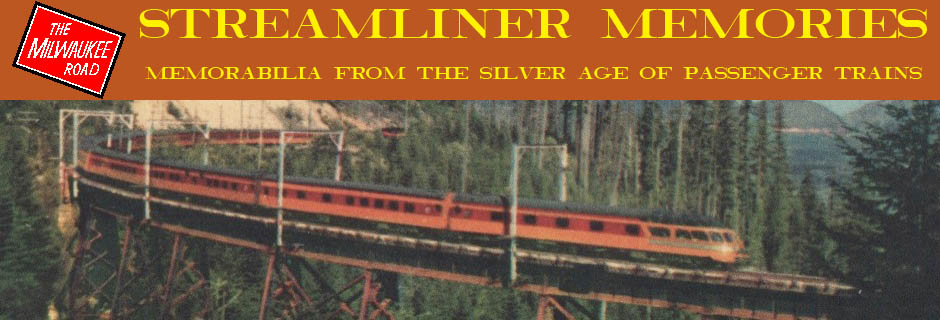Eighteen momentous years had passed since Union Pacific’s 1932 along-the-way booklet that was presented here a few days ago, but you wouldn’t hardly know it from reading the 1950 edition. The newer edition is four pages longer, and most of the photos are different from the ones in the 1932 version. (Both booklets have page numbers, but there are two numbers to each page; thus, the inside front cover is numbered 1 and 2, so the 1932 booklet has 86 page numbers and the 1950 has 94.)

Click image to download a 40.2-MB PDF of this 44-page booklet.
While the photos are different, they aren’t necessarily up to date. Panels 13-14 of the 1932 booklet show what appears to be an early 1920s car in Rocky Mountain National Park; panels 21-22 have “updated” this to show an early 1930s car in the park. Cars shown on pages 13-14 appear to be from the late 1930s.
Even photos of trains are dated. The only streamliner photo is the City of San Francisco and it is shown on Southern Pacific tracks. Other trains are heavyweights, including the Los Angeles Limited, the Gold Coast (also on SP), what is probably the San Francisco Overland (ditto), and what must be the Butte Special in Utah’s Bear River Canyon.
New text provides a more detailed but highly romanticized view of Union Pacific history. This is illustrated, and perhaps inspired, by five photos from Cecil B. DeMille’s 1939 movie, Union Pacific, which no doubt was as historically authentic as any Hollywood movie. Other new text and photos describe Sun Valley and Hoover Dam.
Most of the remaining text has been virtually unchanged since the 1932 edition. For example, panel 17 says, “In Wyoming may be found more big game than in any other section of the United States. . . . Antelope, deer, coyotes, and wolves inhabit the plains.” In fact, Wyoming’s last wolf (before reintroduction) was killed in 1943.
At least the cover has been updated to show a streamliner. Like the 1932 version, the “front” cover shown above is actually on the back.
